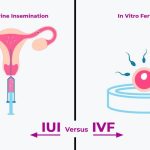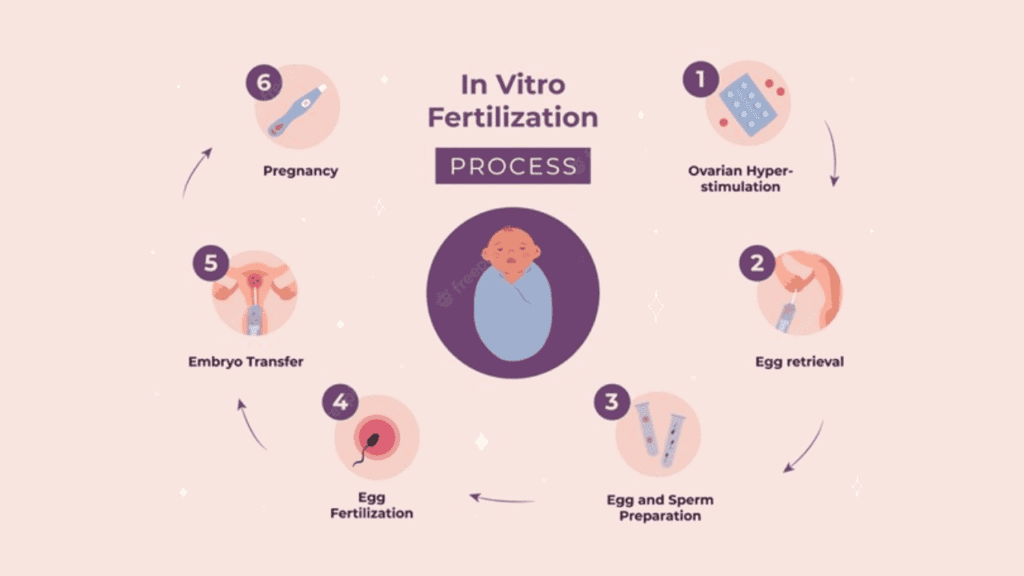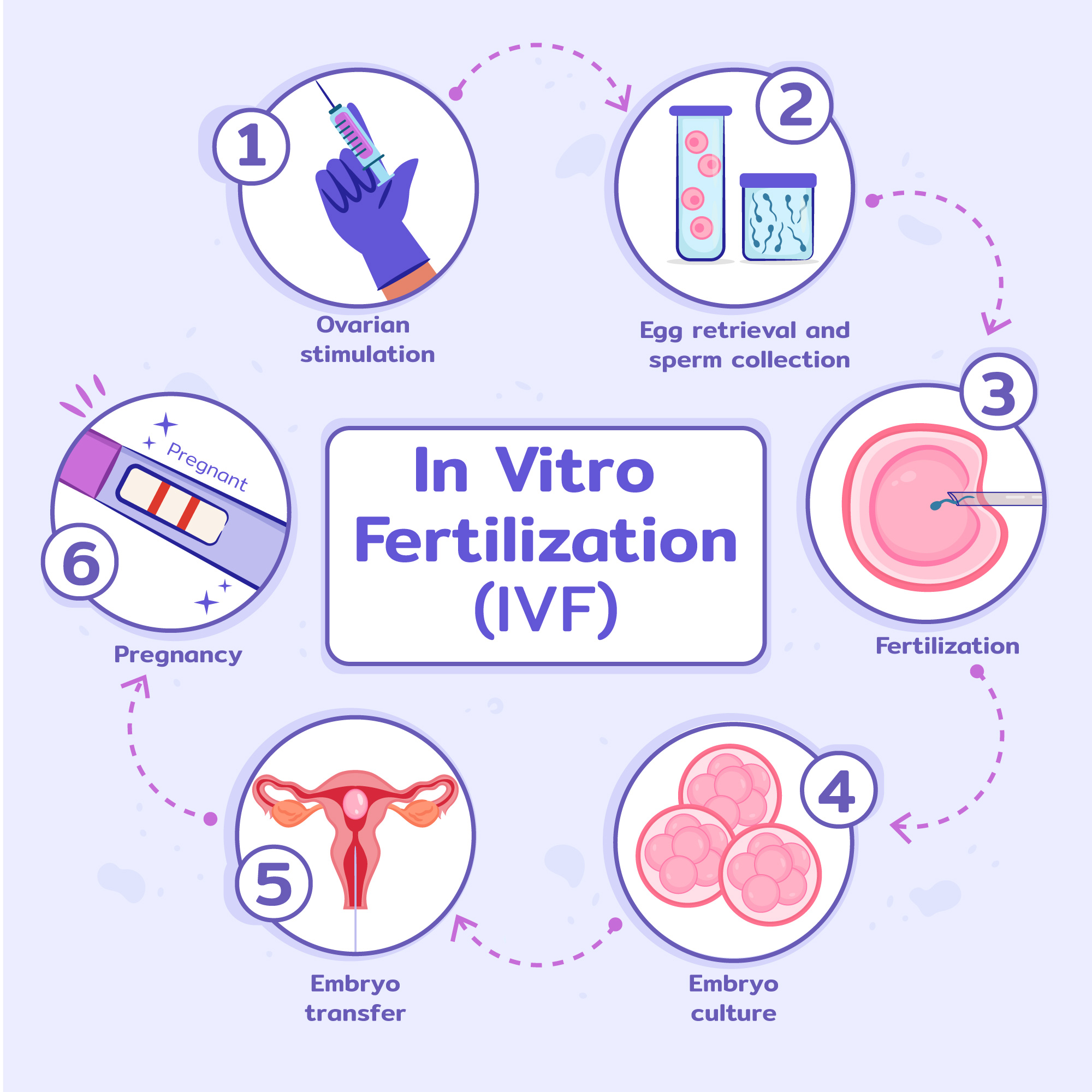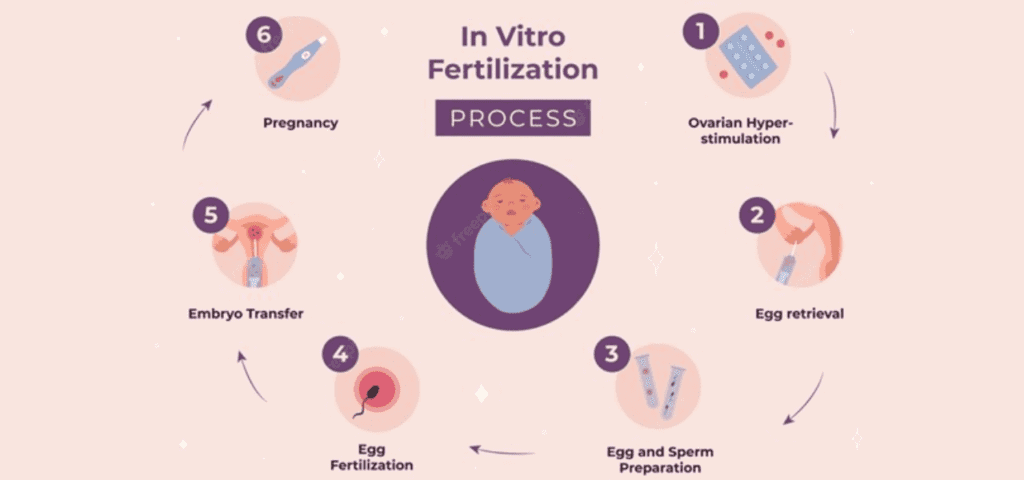The Alabama IVF Ruling: What It Means, Why It Matters, and What’s Next
April 4, 2025
Insemination vs. IVF: Your Ultimate Guide to Fertility Options
April 4, 2025IVF Treatment Cost: What You Need to Know Before Starting Your Journey
Hey there! If you’re reading this, chances are you’re curious about IVF (in vitro fertilization) and what it really costs. Maybe you’re dreaming of starting a family, or maybe you’re just exploring your options. Either way, I’m here to break it all down for you—think of me as your friendly guide through the wild world of fertility treatments. IVF can feel like a rollercoaster, both emotionally and financially, but knowing what to expect can make the ride a little smoother. So, grab a snack, get comfy, and let’s dive into everything you need to know about IVF treatment costs—plus some hidden gems most people don’t talk about!
The Big Picture: How Much Does IVF Really Cost?
Let’s start with the million-dollar question: how much does IVF actually cost? Well, it’s not a million dollars (phew!), but it’s not cheap either. On average, one IVF cycle in the United States costs between $12,000 and $15,000. That’s just for the basics—like the doctor visits, egg retrieval, and embryo transfer. But here’s the catch: that price tag doesn’t include everything. Medications, extra tests, or fancy add-ons can push the total closer to $20,000 or even $30,000 per cycle. And since many people need more than one cycle to get pregnant, the numbers can add up fast.
Why Does IVF Cost So Much?
You might be wondering, “Why is this so expensive?!” It’s a fair question! IVF isn’t just a quick doctor’s visit—it’s a high-tech process that involves a team of experts, specialized equipment, and a lot of time. Here’s a quick peek behind the curtain:
- Doctors and Specialists: Fertility experts, embryologists, and nurses all work together to make IVF happen. Their skills don’t come cheap!
- Lab Work: Creating embryos in a lab requires cutting-edge tech, like incubators and microscopes, plus a super-clean environment.
- Medications: Those hormone shots you’ll need? They can cost $3,000 to $5,000 per cycle, depending on your body and the dose.
- Time: From start to finish, one cycle takes weeks of monitoring, testing, and waiting. That all adds to the bill.
The Sneaky Extras That Add Up
Here’s where things get interesting—and a little sneaky. A lot of folks don’t realize that the “base price” of IVF doesn’t cover everything. These hidden costs can catch you off guard if you’re not prepared:
- Pre-IVF Testing: Before you even start, you’ll need blood tests, ultrasounds, and maybe a semen analysis. That’s $500 to $1,000 right off the bat.
- Freezing Embryos: Got extra embryos? Freezing them for later costs about $1,000, plus $300 to $600 a year to keep them stored.
- Genetic Testing: Want to check your embryos for health issues? Preimplantation Genetic Testing (PGT) can add $3,000 or more.
- Travel: If your clinic’s far away, gas, flights, or hotel stays pile on extra expenses.
Real-Life Example: Sarah, a 32-year-old teacher from Ohio, thought her $12,000 IVF quote was the full deal. Then she got hit with $4,000 in meds, $800 for embryo freezing, and $200 in gas for all those appointments. “I wish someone had warned me about the extras,” she said. Lesson learned: always ask for the full breakdown!
Breaking Down the IVF Process (and Its Costs)
To really get why IVF costs what it does, let’s walk through the steps. Each part has its own price tag, and knowing what’s what can help you plan better.
Step 1: The Prep Phase
Before the magic happens, you’ve got some homework. This is when your doctor figures out what’s going on with your body.
- What Happens: Blood tests, ultrasounds, and maybe a hysteroscopy (a peek inside your uterus).
- Cost: $500–$1,500.
- Why It Matters: This step helps your doctor customize your treatment. No one-size-fits-all here!
Tip: Ask your clinic if any prep tests are covered by insurance. Sometimes they are, even if IVF itself isn’t!
Step 2: Medications to Boost Your Eggs
Next, you’ll take hormone shots to help your ovaries make more eggs. This is a big chunk of the cost—and it’s different for everyone.
- What Happens: Daily injections for 8–14 days, plus checkups to see how your eggs are growing.
- Cost: $3,000–$5,000.
- Fun Fact: Some people need more meds because their ovaries are shy. Others get by with less. It’s like a Goldilocks situation—just right is the goal!
Science Bit: A 2023 study in Fertility and Sterility found that women over 35 often need higher doses, which can bump up costs by 20%. Age matters here!
Step 3: Egg Retrieval
This is the big moment—getting those eggs out!
- What Happens: A quick surgery under sedation where a doctor uses a tiny needle to collect your eggs.
- Cost: $4,000–$6,000 (usually included in the base price).
- Cool Detail: The eggs get whisked away to a lab faster than you can say “baby.” Timing is everything!
Step 4: Making Embryos
Now the lab takes over, mixing eggs and sperm to create embryos.
- What Happens: Sperm meets egg in a petri dish, and embryologists watch them grow for 3–5 days.
- Cost: $2,000–$3,000 (also part of the base price).
- Wow Factor: Did you know embryologists sometimes play classical music in the lab? They say it keeps the vibes calm for the embryos!
Step 5: Embryo Transfer
Finally, it’s time to put an embryo (or two) back in your uterus.
- What Happens: A simple procedure—no sedation needed—just a catheter and a hopeful moment.
- Cost: $1,500–$2,500 (included in the base price).
- Pro Tip: Bring a cozy blanket to the clinic. You’ll want to feel snug after this big step!
Expert Quote: “The transfer is the emotional peak for many patients,” says Dr. Emily Carter, a fertility specialist in California. “It’s where science meets hope.”
Does Insurance Cover IVF? (Spoiler: Maybe Not)
Okay, let’s talk insurance—because this is a huge deal for most people. Here’s the scoop: IVF coverage in the U.S. is a mixed bag. Only 19 states have laws saying employers have to offer some fertility benefits, and even then, it’s not always full coverage.
What’s Covered (and What’s Not)
- Good News: Initial tests (like blood work) are often covered, even if IVF isn’t.
- Bad News: Full IVF cycles? Rarely covered unless you live in a “mandate state” like New York or Illinois.
- Tricky Part: Small companies (under 50 employees) and self-insured plans often skip fertility coverage altogether.
Quick List:
✔️ Covered: Blood tests, ultrasounds, semen analysis.
❌ Not Covered: Medications, egg retrieval, embryo transfer (usually).
How to Check Your Plan
Don’t just guess—dig into your insurance details! Here’s how:
- Call Your Provider: Ask, “Does my plan cover IVF or fertility treatments?”
- Look for Codes: Check for CPT codes like 58970 (egg retrieval) in your policy.
- Ask About Meds: Some plans cover fertility drugs separately—score!
Real Talk: Jake, a 29-year-old mechanic from Texas, found out his insurance covered $1,000 of his wife’s meds but nothing else. “It was something, but we still had to scrape together the rest,” he said.

Hidden Costs Nobody Talks About
Alright, let’s spill some tea. Beyond the obvious stuff, there are costs that sneak up on you—and they’re not always about money. These are the things you won’t find in a clinic brochure but can totally change your IVF experience.
Time Off Work
IVF isn’t a one-and-done deal. You’ll need days off for appointments, retrieval, and transfer—plus recovery time.
- Cost: Lost wages (if you don’t have paid leave) or using up vacation days.
- Estimate: $500–$2,000 per cycle, depending on your job.
- Hack: Talk to your boss early. Some companies are cool about flex time for medical stuff.
Emotional Toll (and Therapy)
IVF can mess with your head—stress, hope, disappointment, repeat. Therapy can help, but it’s another expense.
- Cost: $50–$150 per session, maybe $500 total per cycle.
- Why It’s Worth It: A 2022 study in Human Reproduction showed couples who got counseling during IVF had lower stress levels and better outcomes.
Suggestion: Look for online support groups—they’re free and full of people who get it.
Lifestyle Changes
To boost your chances, you might tweak your life—and your wallet.
- Examples: Acupuncture ($50–$100 per session), organic food, supplements like CoQ10 ($20/month).
- Total: $200–$500 extra per cycle.
- Fun Twist: Some swear by pineapple core (it’s cheap and supposedly helps implantation—why not try it?).
Ways to Save Money on IVF
Don’t panic yet—there are ways to make IVF less of a wallet-buster. Let’s explore some smart moves to cut costs without cutting corners.
Shop Around for Clinics
Not all clinics charge the same. Prices vary by location, reputation, and services.
- Big Cities: $15,000–$20,000 per cycle.
- Smaller Towns: $10,000–$14,000.
- Action Step: Call 3–5 clinics and ask for a detailed quote. Compare apples to apples!
Multi-Cycle Packages
Some clinics offer deals if you buy multiple cycles upfront.
- Cost: $20,000–$25,000 for 2–3 cycles (saves $5,000+ compared to paying separately).
- Bonus: Many include a refund if you don’t get pregnant—check the fine print!
Expert Quote: “Multi-cycle plans can be a game-changer for patients who need more than one try,” says Dr. Lisa Nguyen, a reproductive endocrinologist in Texas.
Medication Hacks
Those meds are pricey, but you’ve got options:
- Generic Drugs: Ask your doc if there’s a cheaper version.
- Pharmacies: Compare prices at places like Walmart or online at GoodRx.
- Donations: Some clinics have leftover meds from patients—ask if they share!
Savings: Could knock $500–$1,000 off your bill.
Grants and Fundraising
There’s help out there if you know where to look!
- Grants: Groups like BabyQuest or the Tinina Q. Cade Foundation give $5,000–$15,000 to eligible families.
- Crowdfunding: Sites like GoFundMe let you share your story and raise cash from friends (and strangers!).
- How-To: Write a heartfelt post, add pics, and update often—people love rooting for you.
Success Story: Mia from Florida raised $8,000 on GoFundMe by hosting a virtual bake sale. “I baked cookies for donors—it was fun and paid for half my cycle!”
IVF Around the World: Is It Cheaper Elsewhere?
What if you could jet off somewhere and get IVF for less? It’s a thing! Let’s peek at some global options.
Popular IVF Destinations
- Mexico: $5,000–$8,000 per cycle. Close to the U.S. and high-quality clinics.
- India: $3,000–$5,000. Super affordable, but travel costs add up.
- Spain: $6,000–$10,000. Known for top-notch care and sunny vibes.
Pros and Cons of IVF Tourism
Pros:
✔️ Lower prices.
✔️ Vacation vibes (hello, beach recovery!).
✔️ Shorter wait times in some countries.
Cons:
❌ Travel expenses ($1,000–$3,000).
❌ Language barriers.
❌ Harder to follow up if issues pop up.
Tip: Research clinics like crazy—look for reviews, success rates, and accreditation.
The Latest IVF Cost Trends (2025 Edition)
IVF isn’t stuck in the past—costs and options are shifting. Here’s what’s new as of March 2025.
Mini-IVF: The Budget-Friendly Twist
Mini-IVF uses fewer meds for a gentler approach.
- Cost: $5,000–$7,000 per cycle.
- Who’s It For: Younger women or those with good egg reserves.
- Science Says: A 2024 study in Reproductive Medicine found mini-IVF success rates are close to traditional IVF for some patients—worth asking about!
Trump’s IVF Promise
In 2024, President Trump pledged to make IVF free or covered by insurance. As of now, he’s signed an executive order to “reduce out-of-pocket costs,” but details are fuzzy.
- What It Means: Could lower costs in the future—stay tuned!
- Reality Check: Don’t hold your breath yet; policy changes take time.
At-Home IVF Kits?
Yep, startups are testing DIY IVF tools—like monitoring devices you use at home.
- Cost: $500–$1,000 (plus clinic fees).
- Status: Still experimental, but it could cut appointment costs someday.
Real Stories: What IVF Costs Really Feel Like
Numbers are one thing, but what’s it like to live it? Here are two stories to bring it home.
Jenna’s Journey
Jenna, 34, and her husband spent $28,000 on two cycles in 2023. “We sold our second car and skipped vacations,” she says. “But holding our son now? Priceless.”
Mark’s Struggle
Mark, 40, went solo with a surrogate after three failed IVFs with his ex. Total cost? $150,000. “It drained my savings, but my daughter’s smile keeps me going.”
Expert Quote: “The financial strain is real, but so is the resilience of these families,” says Dr. Rachel Patel, a fertility counselor in New York.

Your IVF Cost Checklist: Plan Like a Pro
Ready to take control? Here’s your step-by-step guide to tackling IVF costs.
Step 1: Budget Basics
- Add It Up: Base price + meds + extras = your total.
- Buffer: Save 20% extra for surprises.
- Example: $15,000 (base) + $4,000 (meds) + $1,000 (extras) = $20,000.
Step 2: Ask the Right Questions
- “What’s included in the price?”
- “Any discounts for cash or multi-cycles?”
- “Can I use leftover meds?”
Step 3: Get Creative
- Apply for grants.
- Host a fundraiser (think craft sales or 5K runs!).
- Borrow from family (with a clear payback plan).
Table: Cost-Saving Ideas
| Idea | Potential Savings | Effort Level |
|---|---|---|
| Multi-cycle deal | $5,000+ | Low |
| Generic meds | $500–$1,000 | Medium |
| Grants | $5,000–$15,000 | High |
| Crowdfunding | $1,000–$10,000 | Medium |

Let’s Talk: Your Turn!
IVF costs can feel overwhelming, but you’re not alone. What’s your biggest worry—money, time, or something else? Drop a comment below and let’s chat! Have a cost-saving trick that worked for you? Share it—I’d love to hear your story. Together, we can make this journey a little less scary and a lot more hopeful.
